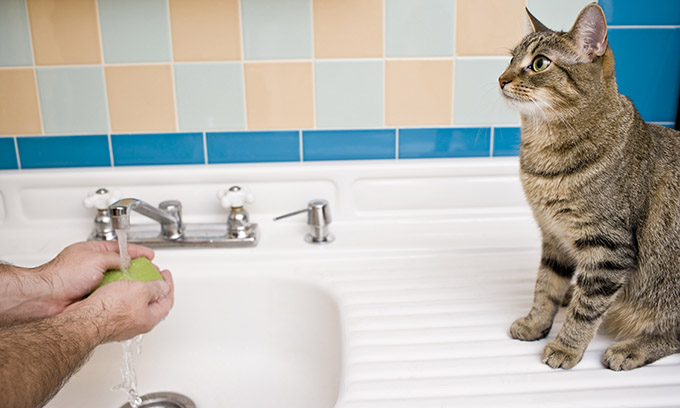
As anyone who works in an animal care facility knows, proper hand hygiene plays a crucial role in keeping the spread of pathogens between animal patients to a minimum. Now, in the post-COVID environment we all inhabit, the importance of sufficient hand washing as an infection control tool has been even more underlined. As a result, today it’s hand hygiene, along with a strong veterinary disinfectant, that is perhaps the best weapon animal care providers have for infection control.
Creates a Safe Working Environment

First and foremost, hand hygiene provides higher levels of safety, and not just for the animals in your care. Proper hand washing aids in creating an overall safer working environment for you and your coworkers, as clean hands don’t spread pathogens from one person to another (or, in this case, from one animal to another). A working environment, with a strong hand washing policy, is one where you and your colleagues can rest assured that your chances of picking up an infection is being managed as carefully as possible.
Prevents Diarrhea and Intestinal Disease
There’s nothing more debilitating and potentially even life-threatening than intestinal diseases. Ailments like diarrhea, caused by infections like salmonella, E. coli, and norovirus are routinely passed after coming into contact with even minuscule amounts of fecal matter, often passed on after changing a child’s diaper, using the bathroom, handling raw meat, or, in the case of animal care, cleaning up after animal patients. This makes proper hand washing absolutely imperative to prevent the spread of intestinal disease through staff and patients alike.
Prevents Transfer of Germs to Surfaces
Diligent hand washing prevents the spread of pathogens from hands to hard, non-porous surfaces in high-traffic areas of your facility. It’s often inefficient to constantly be disinfecting door handles, desktops, workstations, diagnostic tools, and kennels with as often as they would need (which is after coming into contact with anyone or anything new), so practicing hand hygiene diligently prevents these pathogens from transferring in the first place.

Why You Need a Pet Safe Sanitizer
Washing properly, and regularly, with soap and water is just one part of the hand hygiene equation. Proper wearing and disposal of gloves and other hand protection is another part, and it’s one that’s backed up by keeping effective hand sanitizer on hand. A normal office doesn’t have to be picky when it comes to their choice of sanitizer, but animal care facilities need to rely on a pet-safe veterinary disinfectant.
Animals are often much more sensitive to chemicals that a human can tolerate, and it’s crucial to ensure that your desire to control the spread of infection in your facility doesn’t come at the cost of an animal patient having a toxic reaction to the pet sanitizer you use to clean exam rooms and kennels. Together, with a pet safe sanitizer, a strict hand washing routine can and will keep infections to a minimum in your animal care facility.